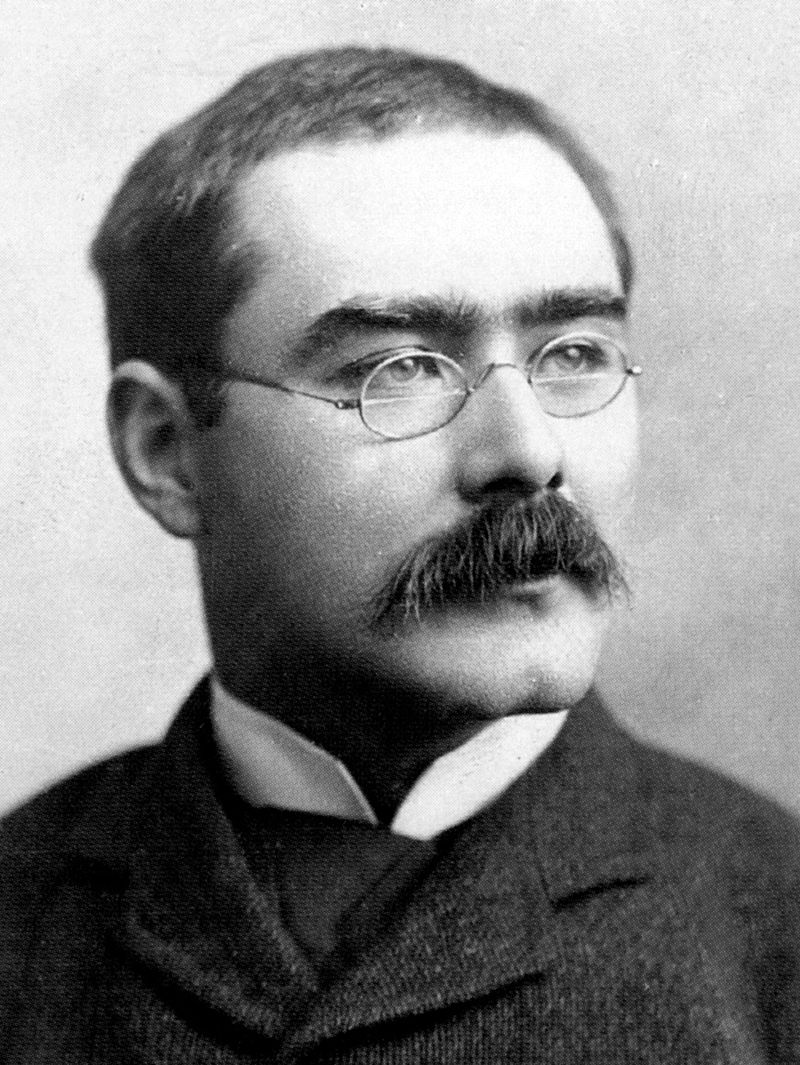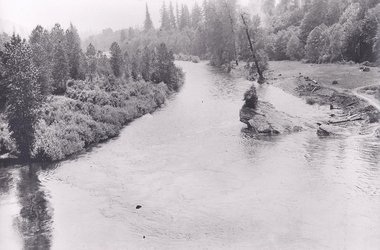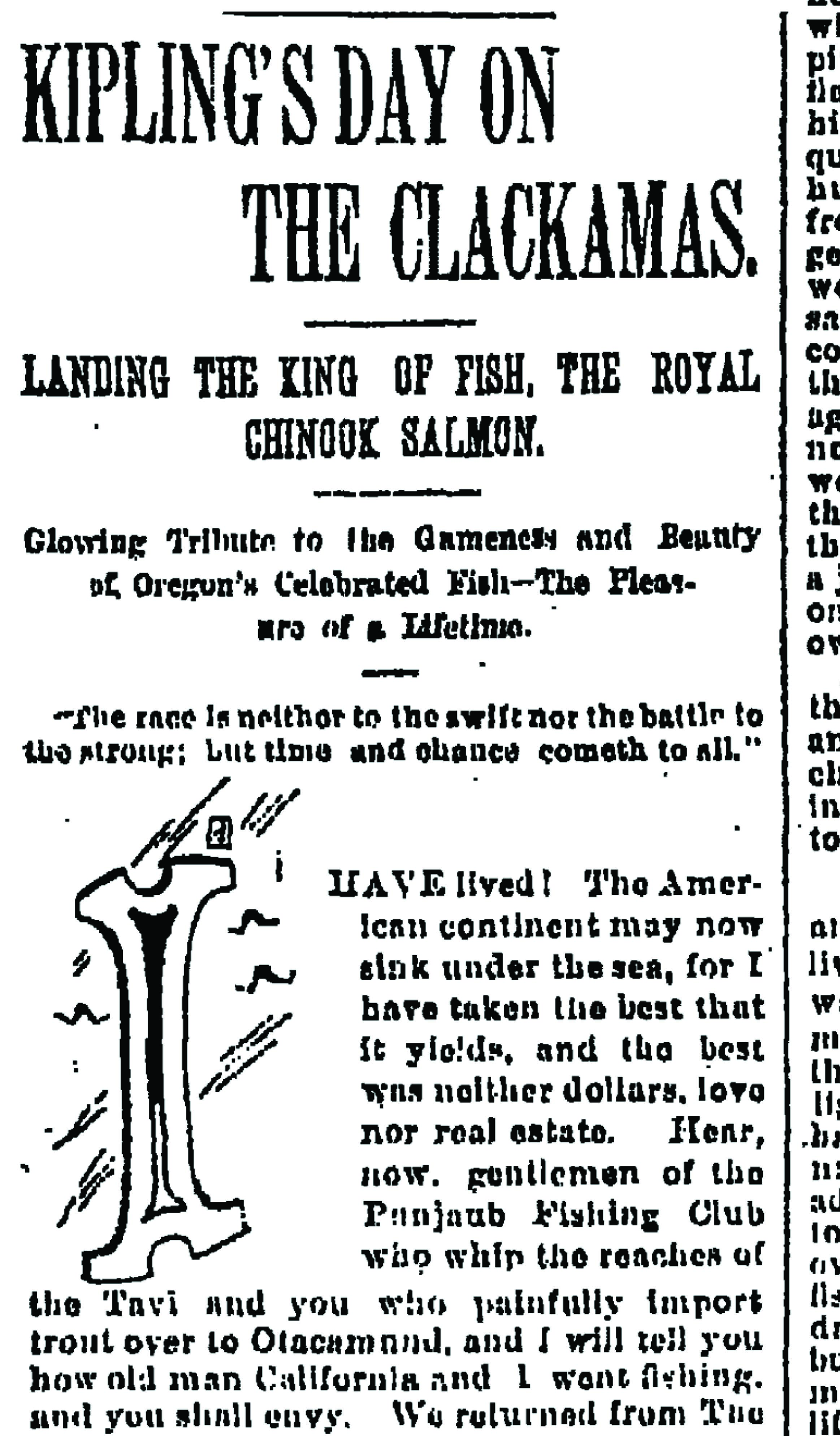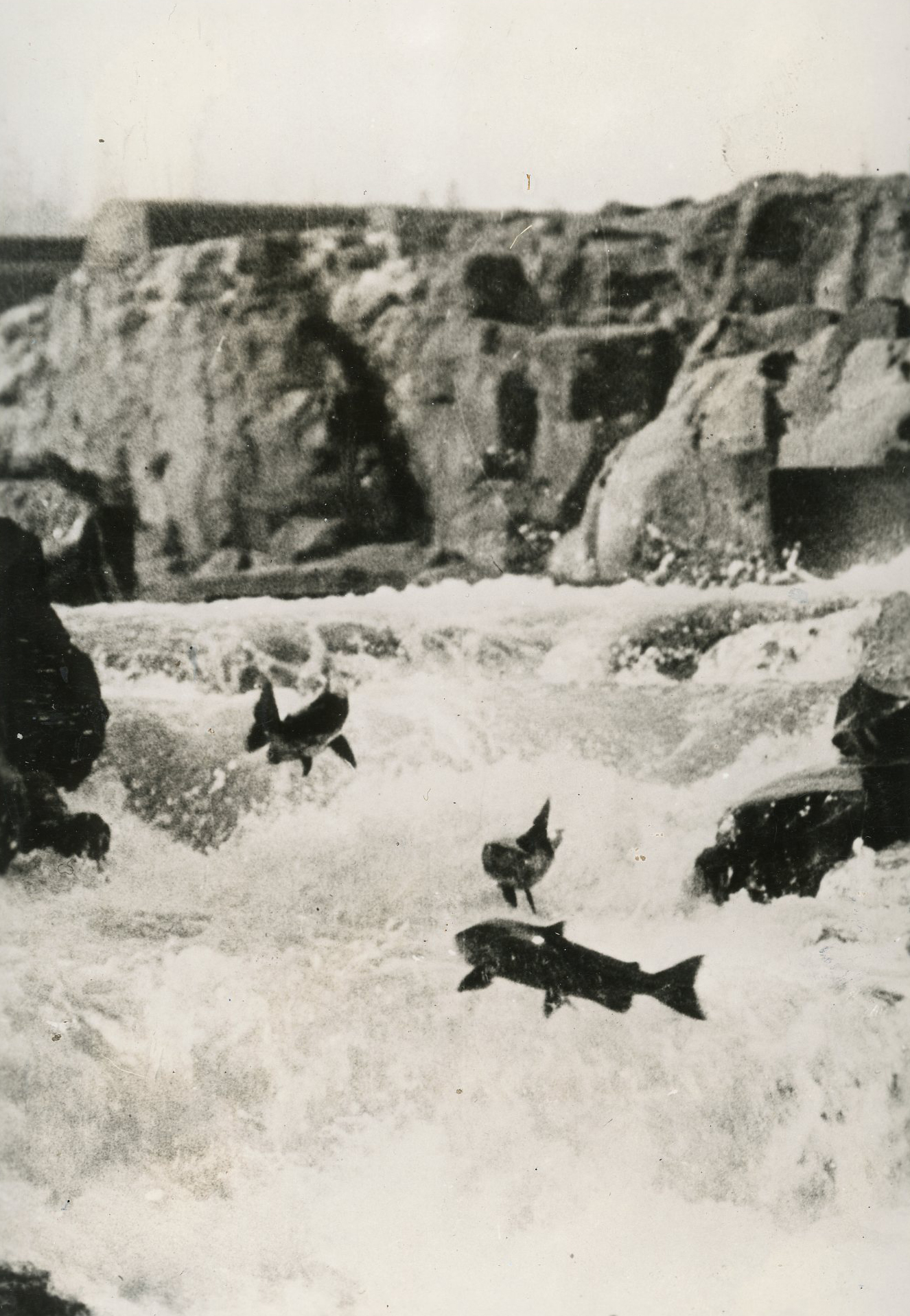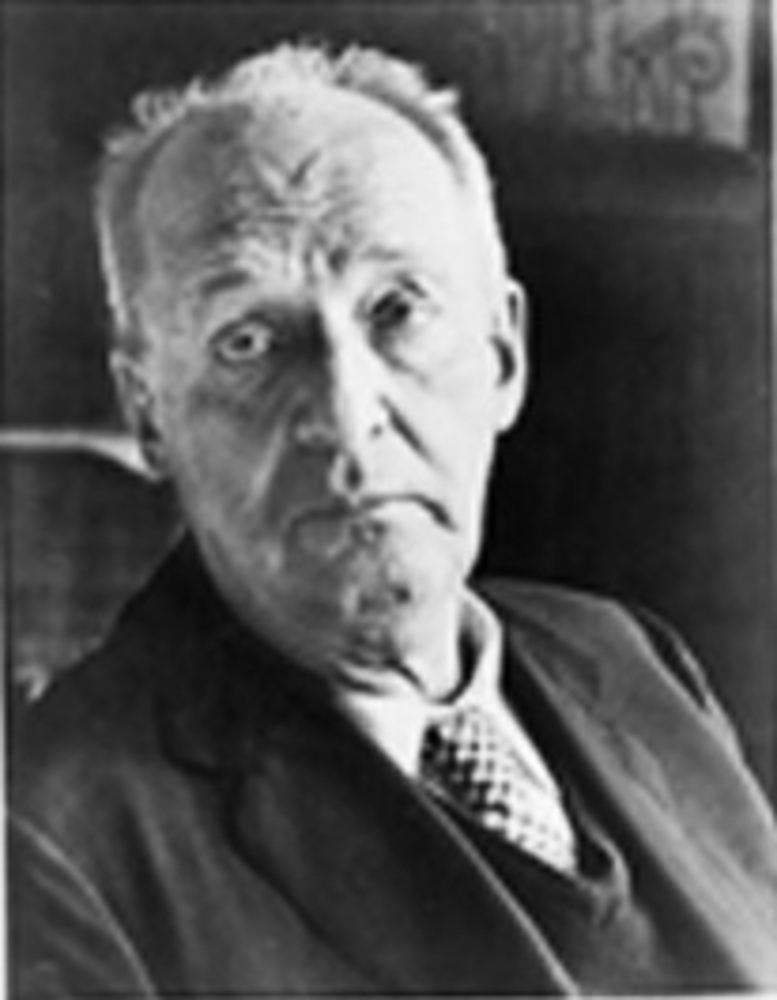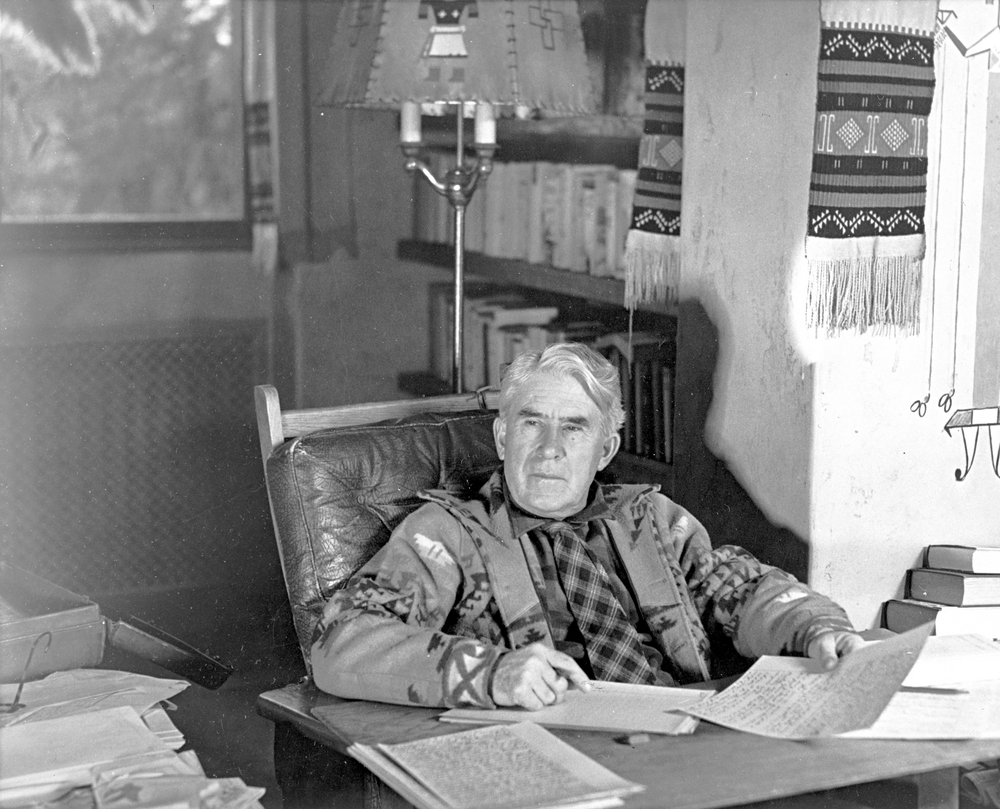The English writer Rudyard Kipling (1865–1936) spent five days in Oregon in June 1889. He wrote about his adventures in Portland, traveling by train and by steamship on the Columbia River to The Dalles, and his memorable fishing trip on the Clackamas River.
In March 1889, employed as a special newspaper correspondent, twenty-three-year-old Rudyard Kipling embarked on a round-the-world journey from India to England by way of North America. Reports of his adventures were published in serial form in 1889 and 1890 in the Pioneer newspaper in Allahabad (present-day Prayagraj), India. Kipling arrived in Portland by train on June 18, 1889, after splitting up with two American friends, Professor S. A. (Alec) and Edmonia Hill, with whom he had traveled from India to San Francisco by way of Burma (Myanmar), China, and Japan.
While on the train, Kipling wrote in his letter entitled “Takes Me through Bret Harte’s Country, and to Portland” that he met “old man California” and an “Insurance man.” The talk is of fishing, and Kipling, who is given the nickname "England" or "Johnny Bull," is included in a plan for a trip. The insurance man encourages "California" and Kipling to take a two-day trip by steamboat up the Columbia River to The Dalles while he arranges with a local friend, referred to as "Portland," to fish on the Clackamas River.
Kipling often used descriptive names or nicknames in these accounts for the Indian newspaper. English scholar Thomas Pinney, who edited several volumes of Kipling’s letter and other writing, wrote that “Old man California" was A.J. Salisbury, a businessman from Port Hueneme, California. He identified the “insurance man” as J. L. M. Shatterley, an insurance adjuster from San Francisco. After Kipling’s fame grew, there were differing claims to the identities of “Portland.” One article in the morning edition of the March 27, 1899, Oregonian identified Charles Edward Rumelin (1858–1929), a Portland advertising agent, private banker, and two-term Portland City Council member as “Portland” and Kipling’s local fishing companion. “Portland” has also been identified as D. H. Stearns (1841–1904), a real estate developer and the founder of the Portland Bee in 1875 (and the husband of Clara Duniway, daughter of Abigail Scott Duniway). A letter to the editor from Oswald West, the former governor of Oregon, in the December 31, 1950, Oregonian asserted that Thomas A. McBride (1847-1930), an Oregon Supreme Court Justice, was “Portland.”
In a letter to Edmonia Hill, written from the City of Portland on Gilman Hotel stationery, Kipling wrote that he was sharing a room with the old man and offered his opinion of the city: "Portland is composed of three streets—two very dirty and one not at all clean." He delighted in the steamboat vocabulary he heard, the regional accents of passengers, and local names like “Washoogal” and “Wikyup.” He also described navigation through the locks, which were under construction (they opened in 1896), and commerce on the river, noting the “salmon-wheels” and fish canneries.
Kipling also described the landscape: “There are many ‘bridal veil’ falls in this country, but few, men say, lovelier than those that come down to the Columbia River. Then the scenery began—poured forth with the reckless profusion of Nature, who when she wants to be amiable succeeds only in being oppressively magnificent.” He described “the peace and purity” of The Dalles, where steamboat passengers spent the night before their return trip to Portland.
The highlight of Kipling’s Oregon visit was catching salmon on the Clackamas River. “I have lived!” he exclaimed in “How I Caught Salmon in the Clackamas” in From Sea to Sea. “That was a day to be remembered, and it had only begun when we drew rein at a tiny farmhouse on the banks of the Clackamas....At the end of six hours we added up the list. Total 16 fish, aggregate weight 142 lbs.”
Returning to Portland, Kipling boarded an evening train for Tacoma in Washington Territory. He then traveled across the country, meeting up with Alec and Edmonia Hill in Pennsylvania before embarking on the final leg of their journey across the Atlantic, arriving in London in October 1889.
The account of the Oregon portion of Kipling's travels is included in From Sea to Sea, a two-volume compilation of travel dispatches published in 1899. Pirated editions with only the North American chapters also appeared under the title American Notes in 1899. Kipling became one of England’s most popular writers, beginning with his poetry and short stories first published in India. In 1907, he was named the first English language recipient of the Nobel Prize in Literature.
In Oregon, residents, fishing guides, and local historians commemorated Kipling’s 1889 fishing adventure by naming a large rock in his honor. The Oregon Board of Geographic Names approved the name on November 3, 2012, and the U.S. Board of Geographic Names officially approved the name and location in February 2013. Kipling Rock, an 18-foot-high, 16-foot-long pillar, rises from the bedrock in the Clackamas River, upstream from Clear Creek near the town of Carver.
-
![]()
Rudyard Kipling, 1895.
From the biography Rudyard Kipling, by John Palmer. Public Domain. -
![]()
Kipling Rock.
Courtesy Kris Tabor, Kris Tabor Photography
-
![]()
"Kipling's Day on the Clackamas," Sunday Oregonian, January 25, 1891.
Courtesy Portland Oregonian
Related Entries
-
![Salmon]()
Salmon
The word “salmon” originally referred to Atlantic salmon (Salmo salar),…
-
Vladimir Nabokov in Oregon
Russian-born American novelist Vladimir Nabokov spent the summer of 195…
-
![Zane Grey (1872–1939)]()
Zane Grey (1872–1939)
Inveterate angler Zane Grey, writer of highly popular Western fiction, …
Map This on the Oregon History WayFinder
The Oregon History Wayfinder is an interactive map that identifies significant places, people, and events in Oregon history.
Further Reading
Kipling, Rudyard. From sea to sea: letters of travel. New York : Doubleday & McClure Company, 1899.
Kipling, Rudyard. American notes. New York : Frank F. Lovell Co., 1899.
Pinney, Thomas. The Letters of Rudyard Kipling, vol. 1 (1872-89). Iowa City : University of Iowa Press, 1990.

